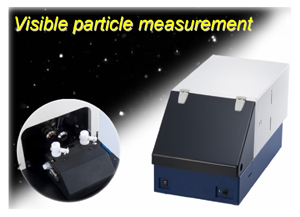 |
 |
 |
 |
 |
|
| |
 |
| |
 |
|
|
|
|


|
|
| Zeta Potential Analysis with ZEECOM Technology |
|
|
| Application Fields |
|
|
Environment
Water treatment, waterworks, flocculation agents, dispersants, flocculation control, microorganisms, planktons, asbestos,
bubbles, soil, beneficiation technology, and etc.
Nano-materials
Functional material development¡¢recording materials, pigments, ceramics, catalytic agents, polymers, carbon black, carbon
nanotubes, inkjet inks, aqueous/non-aqueous solvent paints, fuel cells, coating materials (for automobile parts / electronic
parts), paper manufacturing, surface active agents, and etc.
Life Science
Erythrocyte, biological cells, protein, DDS, liposome, vesicle, drug discovery, and etc. |
|
|
| Features |
|
|
 |
Zeta Potential Measurement |
| |
Microscopic electrophoresis method
Automatic tracking in image processing
Visual and manual measurement of individual particles |
|
|
 |
Image capture of particles |
| |
Image archive / Remeasurement function |
|
|
 |
PC-controlled instrument |
| |
Stage control / Voltage feedback control
Switching control for optical system |
|
|
|
|
 |
 |
|
Measurement method: Acrylic (light passage: glass)
Zeta potential measurement range: -200~200 mV
Mobility:
-20~20 cm2/sec-V
Measurable particle size:
0.02 ¥ìm ~ 100 ¥ìm
Supply voltage: 0~350 V DC *Applicable voltage to electrodes
Light sources: LED / Laser diode
Source position:
Scattered / transmitted light method
Camera: CCD black-and-white video camera
Objective lens:
x10 objective lens (option: additional lens with another magnification)
Video output: Video signal NTSC
Cell stage: Digital display in 0.001 mm increments *Accuracy 0.01 mm
Measurement cell: Standard measurement cell for aqueous solution (option: cell for non-aqueous solution)
Size / Weight:
300 (W) ¡¿ 600 (D) ¡¿ 332 (H) 25 kg
Power supply: 100 V 1 A 50/60 Hz
|
|
| |
|
Analysis modes |
| Mobility / histogram / frequency curve /
mean value / peak value / dispersion /
flow velocity distribution /
pH responsiveness / isoelectric point /
digitization size and zeta potential /
temporal change |
|
|
|
|
| |
|
|
|
| |
|
|
 |
|
 |


















|

